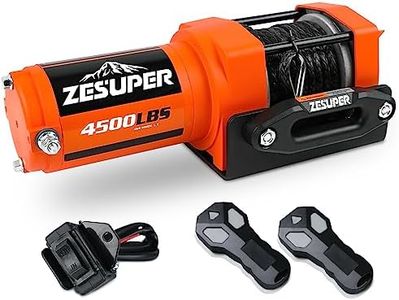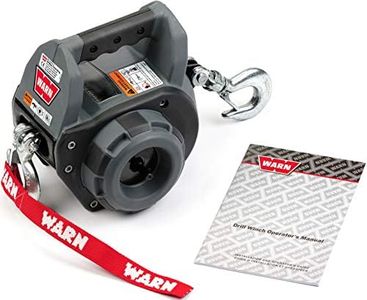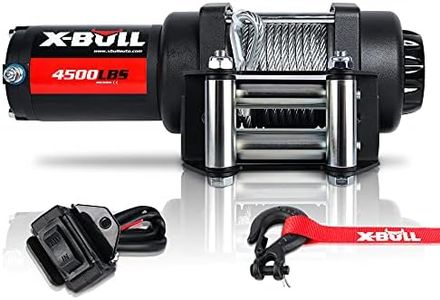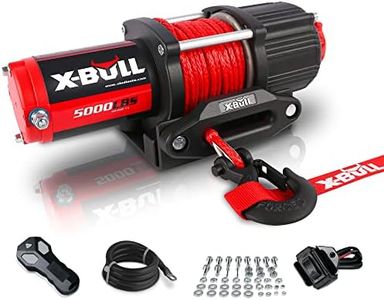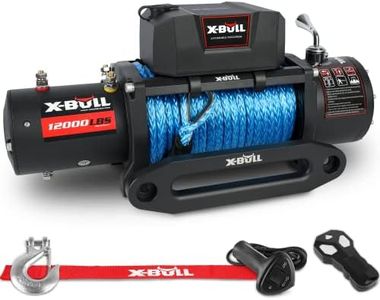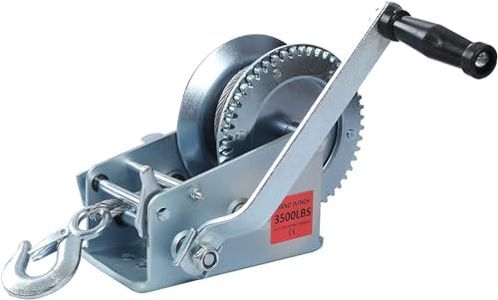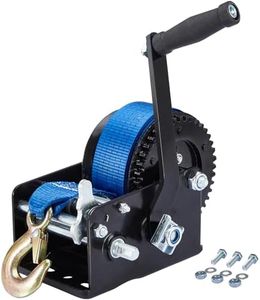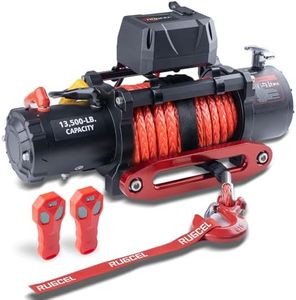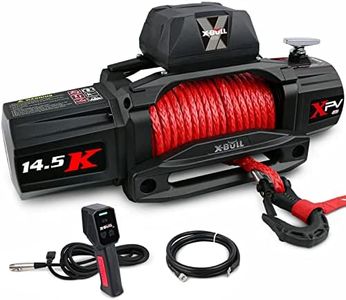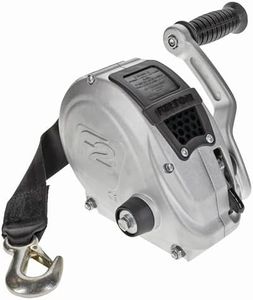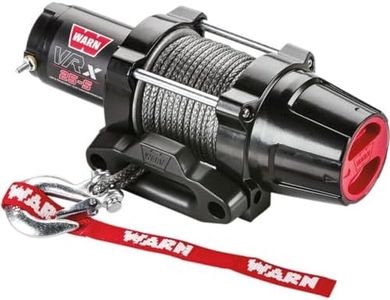We Use CookiesWe use cookies to enhance the security, performance,
functionality and for analytical and promotional activities. By continuing to browse this site you
are agreeing to our privacy policy
10 Best Car Trailer Winch
From leading brands and best sellers available on the web.Recommended lists
Buying Guide for the Best Car Trailer Winch
Choosing the right car trailer winch can make hauling and loading vehicles much easier and safer. It's important to pick a winch that matches your needs, as this ensures efficiency, reliability, and peace of mind during each use. By understanding the key specifications and how they relate to your personal situation, you’ll be able to select a trailer winch that performs well and suits the vehicles and jobs you have in mind.Pulling CapacityPulling capacity refers to the maximum weight a winch can safely pull. It’s crucial to know the weight of the vehicles or loads you’ll be hauling so you select a winch that won’t be overstrained. Pulling capacities are usually rated in pounds or kilograms. As a rule of thumb, choose a winch with a capacity at least 1.5 times the weight of the heaviest vehicle or load you plan to move. Smaller winches (up to 4,000 lbs) work for ATVs or small cars, medium (4,000–9,000 lbs) for most cars and light trucks, and large ones (over 9,000 lbs) for big trucks and heavy-duty use. Matching capacity to your needs ensures smooth operation and safety.
Power SourceWinches are powered either electrically (commonly via the vehicle battery) or manually (hand-crank). Electric winches are much faster and require less effort, making them suitable for frequent or heavy-duty use, while manual winches are simple and don’t require any electrical connection but are best for occasional, lighter jobs. Think about how often you'll use the winch and the ease you desire – frequent users with heavier loads tend to prefer electric types, while manual ones work if your needs are simple and infrequent.
Cable Type and LengthThe cable or rope on the winch can be made from steel or synthetic materials. Steel cables are durable and resistant to abrasion, making them good for rugged use but they can rust and are heavier. Synthetic ropes are lighter and easier to handle but can be more prone to tearing on sharp edges. The length of the cable also matters: longer cables offer more flexibility for anchoring, but shorter cables are usually stronger and less likely to tangle. Choose the material based on your working environment and your comfort handling the cable; for regular use and heavy vehicles, steel may be preferred, but for ease and safety, synthetic ropes are popular.
Line SpeedLine speed means how quickly the winch can pull the cable when under load. Faster line speeds make loading quicker, but may require more battery power with electric winches. For most occasional users, line speed isn’t critical, but for those who value time or need to quickly load multiple cars, a faster winch can make work more efficient. Match line speed to your patience and workload; slow speeds are fine for infrequent use, while busy environments benefit from something faster.
Mounting OptionsThis refers to how the winch attaches to your trailer – it could be a permanent mount or a removable one. Permanent mounts are stable and best for frequent use, while removable mounts allow for more flexibility if you use the winch across different trailers. Consider if you’ll be dedicated to one setup or want something you can move around. Your trailer’s construction and usage style will help guide this choice.
Remote Control and OperationSome winches come with remote controls (wired or wireless) that let you operate them from a safe distance. This adds convenience and extra safety, especially if you work alone or need to keep clear from the winched vehicle. If you prioritize safety and ease of use, look for models with remote control options rather than manual-only switches. Think about your typical work environment and whether remote operation will really benefit you.
